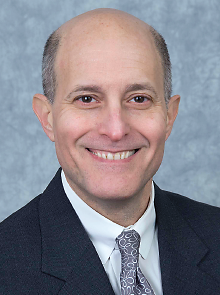Despite Progress on Many Fronts, Gay Community Still Faces Violence
Abstract
Gay and lesbian individuals have won the right to marry in 18 states, and same-sex married couples are now eligible for federal benefits, but despite this progress, hate crimes directed at them have increased 4.3 percent since 2006.
Though federal laws and those in several states have granted some civil rights to individuals who identify as lesbian, gay, bisexual, or transgender (LGBT), violence against people of the LGBT community remains a major concern.

Philip Bialer, M.D., maintains that to reduce bias and hate crimes directed at LGBT individuals, sexual orientation and gender identity must be included in all federal and state antidiscrimination legislation.
“I gave a lecture on violence among LGBT people in 2006 at the [APA] annual meeting,” Philip Bialer, M.D., an attending psychiatrist at Memorial Sloan Kettering Cancer Center, told attendees at a session on violence directed at minorities at last month’s APA annual meeting. “It is disconcerting that since 2006, anti-LGBT violence has gotten worse—at least in terms of the numbers.”
In 2012, the Federal Bureau of Investigation reported approximately 6,000 hate-crime incidents in the United States, with 19.6 percent of those crimes resulting from sexual-orientation bias—up from the 15.3 percent reported in 2006.
During an interview with Psychiatric News, Bialer, who is also an associate professor of clinical psychiatry at Weill Cornell Medical College, explained that until late in the 20th century, most criminal offenses that were reported as hate crimes were based on “perceived race, color, religion, or national origin.” Sexual orientation was finally added to the list under the Hate Crime Statics Act of 1990. The act was amended in 2009 to include gender and gender identity.
According to the National Coalition of Anti-Violence Programs (NCAVP), the most common forms of violence reported against LGBT people are verbal harassment, threats and intimidation, and physical violence. LGBT individuals who are white are twice as likely as those who are members of ethnic minorities to report such incidents; however, ethnic minorities and transgender individuals are more likely to suffer more severe attacks.
“People of color and transgender women are at very high risk for severe anti-LGBT violence and even homicide,” Bialer said at the meeting. He cited statistics from the NCAVP showing that African Americans accounted for 54 percent of homicide victims of anti-LGBT hate crimes in 2012, compared with 15 percent and 11.5 percent, respectively, reported among Latino and Caucasian populations. Transgender women, regardless of race, accounted for over half of the acts of violence against LGBT individuals that resulted in homicide.
Because ethnic minority and transgender women are at high risk for sexual-orientation bias crimes and less likely to report violence, Bialer emphasized that it is of utmost importance for LGBT support groups to devote more effort to ensuring that these higher-risk populations for anti-LGBT violence feel more comfortable and accepted when seeking support.
Bialer also addressed other issues that impact the health of LGBT individuals, particularly increased hostility against LGBT individuals by some police and first responders, bullying of LGBT youth, and increased rates of suicidality and negative behaviors such as substance use and binge drinking that may be attributed to being victims of discrimination or targets for violent acts.
Bialer told Psychiatric News that because of the prevalence of anti-LGBT violence and the significant psychiatric sequelae, it is essential for psychiatrists who treat LGBT individuals to inquire about the patients’ history of discrimination, harassment, or overt violence and to ask how they are coping with such situations. In addition, he emphasized the need for more training and education for police, EMS workers, and other first responders to increase their knowledge and cultural competency about LGBT people, which could lead to more compassion when interacting with the LGBT community.
“There is still much work to be done on federal and state levels,” stated Bialer. “My hope is that increased acceptance of LGBT people and continued progress with issues such as marriage equality will have a beneficial effect on attitudes toward LGBT people and eventually result in fewer anti-LGBT hate crimes.” ■



